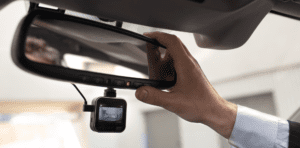Compare cheap car insurance
✔ Compare cheap car insurance quotes
✔ Over 110 insurance providers
✔ Get a quote in minutes
✔ Save up to £504*
If your car won’t start, you’re probably wondering why and what steps you can take to fix it. We’ll cover some common reasons why your car might not start and provide solutions to help you get back on the road.
A Flat or Faulty Battery
Identifying the Problem
If your car refuses to start, a multitude of reasons could be at play. However, the most common cause is likely a flat or faulty battery.
When attempting to start the engine, do you notice the engine turning over slowly without starting, hear a faint click, or encounter complete silence? These signs suggest that a flat battery might be the culprit.
It’s not unusual for cars to struggle to start after being left unused for an extended period, such as during the Christmas holidays. Additionally, leaving your lights on overnight can lead to a flat battery.
Solutions to Consider
To rectify this situation, jumpstarting the engine might be necessary. This requires jump leads and another vehicle with a fully charged battery. However, this should only be attempted if you are confident in your knowledge to avoid personal injury or damage to the vehicles.
If your battery has charge but your car still won’t start, it might be necessary to tighten or clean the connections safely, or seek assistance from a mechanic. Another possibility is that your battery has simply aged and needs replacing, as most batteries have a lifespan of about six years.
How much can you save on your car insurance?
Breakdown cover providers
Find the UK's leading breakdown cover providers below.
A Faulty Starter Motor
Recognising the Signs
When attempting to start your car, a loud clicking noise might not just indicate a problem with the battery but could also suggest an issue with the starter motor.
This crucial electrical motor, linked to the battery, initiates the engine’s operation upon turning the ignition.
The problem often lies in poor wiring connections or faulty solenoids (electromagnets), making the starter motor a challenging component to repair by oneself.
Seeking Solutions
For those with manual transmission vehicles, a potential fix involves bump starting the car.
This method requires assistance from another person to push the car while you are inside, with the ignition turned to the ‘on’ position and the clutch depressed.
Once the car gains some momentum, quickly release the clutch to start the engine.
In situations where bump starting isn’t viable, it may be prudent to call a friend or a recovery service to tow your vehicle to a garage for professional repair.
How much can you save on your car insurance?
Breakdown cover providers
Find the UK's leading breakdown cover providers below.
Fuel Problems
The Impact of Cold Weather
When the temperature drops, your car requires more fuel to start successfully. If your fuel levels are already low, this can lead to difficulties in getting the engine to start. A straightforward top-up of fuel is often all that’s needed to address this issue.
Dealing with a Clogged Fuel Filter
Another common problem is a clogged fuel filter, which prevents petrol or diesel from reaching the engine.
This obstruction makes it challenging for the engine to burn the necessary fuel to start.
Manufacturers typically recommend replacing the fuel filters every two years or every 15,000-20,000 miles, although you should consult your vehicle’s handbook for specific guidance.
Breakdown cover providers
Find the UK's leading breakdown cover providers below.
How much can you save on your car insurance?
A Flooded Engine
Identifying a Flooded Engine
If your car refuses to restart or starts but keeps cutting out, you might be dealing with a flooded engine.
This issue is particularly common in older petrol cars, where an excess of fuel and insufficient air within the engine block the spark plugs from functioning correctly.
How to Address the Issue
The key to resolving a flooded engine is patience. Firstly, wait a few minutes. Ensure the gearbox is in neutral and the handbrake is engaged. Next, press the accelerator all the way down and attempt to start the engine.
Once the engine starts, allow it to idle for a few seconds to warm up adequately before you begin to drive. If these steps don’t rectify the problem, it might be time to seek assistance from professional mechanics.
How much can you save on your car insurance?
A Faulty Key Fob
The Role of the Key Fob in Modern Cars
Many contemporary cars feature keyless entry and ignition, allowing the vehicle to start with the simple push of a button.
This system relies on a coded signal from the smart key fob. If the engine does not recognise your key fob, the car will not start.
Troubleshooting Key Fob Issues
If you encounter this issue, the solution might be as simple as replacing the key fob battery. This is likely the problem if the central locking system is also unresponsive.
In some cases, you can still start your car with a dead key fob by holding it directly against the start button as you press it.
Should you suspect the key fob itself is malfunctioning, it’s advisable to contact your dealer for assistance.
Additional Advice
Top tip: If your car won’t start and the key won’t turn, it could be due to a locked steering wheel. Attempt to unlock it by gently pulling the steering wheel left and right while carefully turning the key in the ignition.
How much can you save on your car insurance?
Breakdown cover providers
Find the UK's leading breakdown cover providers below.
Cold Weather
The Challenge of Frozen Fuel Lines
In cold weather or after your car has been exposed to snow, you might encounter a frozen fuel line. This occurs when water accumulates in the fuel line, a situation that becomes more likely if your fuel tank is nearly empty.
Preventative Measures
To avoid this issue, mechanics advise keeping your tank at least half full during the winter months. This simple step can significantly reduce the risk of a frozen fuel line.
If a frozen fuel line isn’t the cause of your troubles, damp spark plugs might be the culprit. If you’re uncertain about the cause of the problem or how to fix it, it’s wise to call a mechanic.
Moreover, your car insurance may cover the costs associated with this issue, providing additional assistance.
How much can you save on your car insurance?
The Benefits of Breakdown Cover
Essential Assistance When You Need It Most
No matter the cause of your breakdown, finding yourself stranded can be a stressful experience. This is precisely where breakdown cover proves invaluable, offering peace of mind and essential support during unexpected vehicle failures.
How Comparoo Can Help
Comparoo is dedicated to assisting you in finding both car insurance and breakdown cover that suits your budget and needs. By starting a quote with us today, you could discover potential savings on your car insurance, ensuring you’re protected without overspending.
How much can you save on your car insurance?
Breakdown cover providers
Find the UK's leading breakdown cover providers below.
Frequently asked questions
The most common reason for vehicle breakdowns is a flat battery. While there are various factors that can lead to a flat battery, the primary cause is often human error. This includes leaving the lights or radio on for an extended period or neglecting to start the car for an extended period, such as when it has been parked for months.
A flat battery can be an inconvenience, especially when you’re in a rush or far from assistance. It’s important to take precautions to avoid this common issue, such as ensuring all lights and electronics are turned off when exiting the vehicle and regularly starting the car if it’s not being used frequently.
If you find yourself with a flat battery, the most common solution is jump-starting the vehicle using jumper cables and another vehicle with a functional battery. Alternatively, you can seek the help of a breakdown service provider who can assist you in jump-starting your vehicle or provide battery replacement if needed.
Remember, regular maintenance and taking simple precautions can go a long way in preventing a flat battery and reducing the likelihood of experiencing a vehicle breakdown.
If you find yourself in a situation where your car won’t start and you don’t have breakdown cover, you can still seek roadside assistance. However, it’s important to note that without breakdown insurance, you may be faced with a substantial bill for the services rendered.
Having the appropriate breakdown cover in place offers you peace of mind, knowing that you are protected in case of unexpected vehicle breakdowns. Breakdown cover typically includes services such as roadside assistance, recovery, and even onward travel options to ensure you’re not left stranded.
Investing in breakdown cover can save you from potentially significant expenses and the stress of finding assistance during an inconvenient breakdown situation. It provides reassurance that help is just a phone call away and that trained professionals will be there to assist you promptly.
Before making a decision, it’s advisable to compare breakdown cover options to find a policy that suits your needs and budget. Comparoo can help you explore various breakdown cover options and find the right one for you.
Breakdown cover providers
Find the UK's leading breakdown cover providers below.
Being prepared for a breakdown can save you time and hassle when faced with unexpected car troubles. Here are some essential tools and items we recommend keeping in your car:
Jump leads: Carrying a set of jump leads allows you to jump-start your vehicle if the battery dies. This can come in handy if you or another motorist is available to provide assistance.
Tyre jack and spare tyre: A tyre puncture or blowout can leave you stranded on the side of the road. Having a tyre jack and a fully inflated spare tyre enables you to change the tyre and continue your journey safely. Make sure you also have a lug wrench or tyre iron to remove and tighten the wheel nuts.
Empty fuel can: Running out of fuel can be a frustrating experience. Keeping an empty fuel can in your car allows you to safely transport fuel from a petrol station to your vehicle in case you run out of petrol.
Torch and reflective warning sign: If you break down at night or in low visibility conditions, having a torch and reflective warning sign can help make you more visible to other drivers and aid in your safety while inspecting or working on your vehicle.
Basic toolkit: A basic toolkit with essential tools like screwdrivers, pliers, adjustable wrench, and a socket set can assist with minor repairs or adjustments if needed.
First aid kit: In case of any minor injuries or medical emergencies, having a well-stocked first aid kit in your car is always a good idea.
It’s important to note that while having these tools can be helpful, it’s equally important to prioritise your safety. If you’re unsure about how to use any of the tools or if the breakdown situation requires professional assistance, it’s best to contact a breakdown recovery service or seek help from trained professionals.
Remember to regularly check and maintain your toolkit and replace any expired or damaged items to ensure they are ready for use when needed.
Breakdown cover providers
Find the UK's leading breakdown cover providers below.












